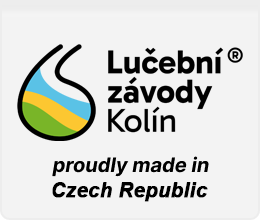
Nevertheless, in the case of partial reductions, e.g. reductions of carboxylic acid esters to aldehyde stage, it is problematic to control such reductions. In these cases very low cryogenic reaction temperatures have to be used but still the yield of product stays very often relatively low. We have solution also for such partial reductions where the usage of weaker reducing agent is necessary. In Synhydrid® one hydridic atom of SDMA molecule can be substituted by another organic substituent. It results in formation of weaker reducing agent with only one hydridic group where the new incorporated substituent can influence reduction results. Ideal selection of substituent will enable to obtain maximum reaction yield of desired specific partial reduction product. Such modified reducing agent can be very useful e.g. in the case of aldehydes preparation from carboxylic acid esters or nitriles and also for preparation of lactols from lactones.
We offer to our customers a possibility of modified Synhydrid® reducing agent development which will maximize the yield of reduction product in specific reduction step. Suitable option of organic substituent in Synhydrid® modification can lead to preparation of reducing agent comparable with diisobutylaluminium hydride (DIBAL) in many partial organic reductions. In some cases this modified Synhydrid® reducing agent can be even more effective than DIBAL and also can be applicable at higher reaction temperatures than cryogenic as DIBAL which will lead to decrease of production costs.
SYNHYDRID® NMPIP 57-13

SYNHYDRID® NMPIP 57-13 is a novel reducing agent with sodium bis(2-methoxyethoxy)(4-methylpiperazin-1-yl)aluminium hydride as an effective reducing component. It is modification of sodium bis(2-methoxyethoxy)aluminium hydride in which one of the hydridic hydrogen is substituted by N-methylpiperazinyl group. SYNHYDRID® NMPIP 57-13 is weaker reducing agent, which enables to realize partial reductions in organic syntheses even at the temperatures above 0 °C. An example of such partial reduction is reduction of carboxylic acid or carboxylic acid ester to aldehyde. When Synhydrid® is used at normal temperatures, this reduction will proceed to alcohol. If the low cryogenic temperatures and inverse method of reactant dosing will be used, also aldehyde can be prepared. However, this process is very energy demanding, because it is necessary to cool the reaction mixture to about -60 °C, and difficult to control. By using of SYNHYDRID® NMPIP 57-13 it is possible to achieve very high yield of desired aldehyde with minimum cooling requirements. In many cases it is possible to carry out this reduction at the temperatures about 20 °C. Another type of reduction, where the reducing potential of SYNHYDRID® NMPIP 57-13 can be successfully used, is the reduction of nitriles to aldehydes. SYNHYDRID® NMPIP 57-13 could also find use in reductions of lactones to lactols.
SYNHYDRID® NMPIP 57-13 is a clear, colorless liquid containing 50 % wt. of effective reducing substance sodium bis(2-methoxyethoxy)(4-methylpiperazin-1-yl)aluminium hydride dissolved in toluene. For testing and laboratory purposes SYNHYDRID® NMPIP 57-13 is supplied in 200 g glass bottles. The glass bottle is covered by plastic bag and then it is inserted into 1 L steel can which is finally packed into ADR certified fiberboard box. For industrial applications SYNHYDRID® NMPIP 57-13 can be supplied in 15, 25, 50 or 200 kg steel drums.



